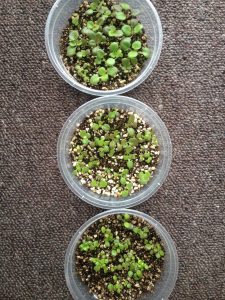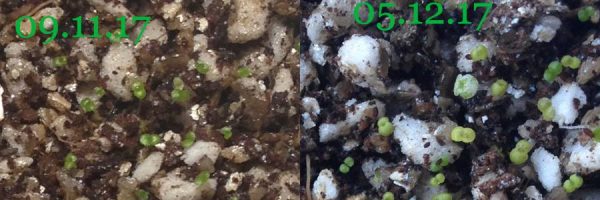Growing African violets from seed is a fun and rewarding way to add more of these beautiful bloomers to your home or garden. While it requires some patience and care, with the right steps, you’ll have a flourishing crop of violets in no time.
Why Grow African Violets from Seed?
African violets, also known as Saintpaulia, are very popular houseplants because of their pretty flowers and easy care needs. Most of the time, leaf cuttings are used to start new plants, but growing plants from seeds has some unique benefits:
-
Greater genetic diversity – Seedlings will have new unpredictable traits not identical to the parent plant. This allows you to discover exciting new varieties.
-
Watching them sprout and grow is fun. Enjoy seeing all the stages of their life.
-
There are a lot of plants that can be grown from a single seed pod—many more than you’d get from cuttings.
-
Allows you to breed your own hybrids – Cross-pollinate different African violet varieties to create new combinations
Following these steps will help you grow more beautiful African violets and enjoy seeing them grow from seeds to bloom.
How to Harvest African Violet Seeds
Before planting seeds you need to get them from an existing African violet. Here’s how to collect and save the seeds
Wait for Flowers to Bloom
Seeds start from pollinated blooms. Let African violet flowers open fully so pollen is accessible.
Remove Pollen Sacs
Inside each flower are yellow, oval pollen sacs. Pick them off once bloom opens wide enough.
Open the Sacs
Crack pods open gently to release the fine, powdery pollen inside.
Pollinate Flowers
Use a brush or fingertip to transfer pollen to the tip of another flower’s pistil.
Allow Seed Pods to Form
If pollination succeeded, a green pod will swell at base of flower in about 30 days.
Harvest Ripe Seed Pods
Let pods mature and turn brown over 6-9 months. Carefully open to collect seeds.
Store Seeds Properly
Place seeds in folded paper and sealed bags. Keep in cool, dry place until planting.
How to Plant and Care for African Violet Seeds
Once you’ve gathered some viable seeds, it’s time to nurture them into full-grown African violet plants. Follow these tips for successful germination and growth:
Use a Peat-Based Seed Starting Mix
This will prevent tiny seeds from falling through gaps into soil. Keeps them on surface.
Evenly Sow Seeds on Top
Don’t bury them; just sprinkle evenly over moistened mix. Cover container to retain moisture.
Provide Warmth and Humidity
Keep them between 68-80°F on a heat mat or near other warm appliance. Mist to keep humid.
Give Bright, Indirect Light
No direct sun, but ample brightness from a south window or grow lights.
Wait for Seedlings to Emerge
Tiny sprouts will start poking through mix in 2-3 weeks if conditions are right.
Transplant Seedlings When Leaves Are 1/2 Inch Wide
Move each into own small pot once established. Keep covered until more mature.
Use General African Violet Care Tips
After transplanting, care for seedlings as you would adult violets. Ensure proper light and moisture.
Expect First Blooms in 6-9 Months
With good care, seedlings will reach maturity and flower in less than a year. Enjoy!
Troubleshooting Common Seed Growing Issues
Don’t be discouraged if you encounter some problems along the way. Here are some troubleshooting tips:
Seeds Fail to Germinate
- Increase warmth and humidity.
- Ensure even moisture; mist if needed.
- Check seed viability; may need fresh batch.
Leggy, Spindly Seedlings
- Give more light immediately. Supplement with grow lights.
- Bury stem deeper when transplanting.
Mold Growth on Soil Surface
- Allow more time between waterings.
- Gently scrape off mold and sprinkle more seed mix.
Drooping or Wilting Plants
- Check moisture needs and water more frequently if required.
- Move to area with higher humidity.
Enjoy Your Homegrown African Violet Collection
With proper care and patience, you can grow trays full of vigorous African violets from a single harvested seed pod. Take pride in nurturing them through all stages of growth. And be delighted when those first colorful blooms open up on your homegrown plants. Growing African violets from seed is a rewarding adventure for any indoor gardener!
- I started transplantation on 30th of January 2018.
- Most of the seedlings had only one or two sets of leaves at three months old.
- New soil for plants: equal parts perlite, vermiculite, and Jiffy Pellet
- Conditions for growth: LED light, summer temperatures in New Zealand (great for the violets),
That transplantation was a gamechanger for the plants. I didn’t have time to do all of them at the same time, so I could see the difference – the newly transplanted seedlings outgrew their non-transplanted siblings in less than a week. The difference was stronger day by day.

I think Jiffy Pellet is a great way to start seeds because it is made of peat, is very fine, and has nutrients that will help the seedlings grow. I just added some boiling water to the pellets, let them hydrate, broke them and mixed with perlite and vermiculite.
Where to buy African Violets seeds?
It looks like the only commercial reliable source of African Violets seeds is Ronn Nadeau. That’s what I learnt after endless hours of searching all over the Internet. They say there is one more supplier in the UK, but I never tried their seeds. It looks like all other seeds sellers I could find were reselling Nadeau seeds as well.
There are plenty of African Violets seeds available on eBay and Aliexpress, and they are mostly fakes – you’ll get some weeds seeds if get any at all. So don’t waste your time and money on those. Go to Ronn Nadeau – he is the loveliest person ever, and his seeds are the real thing.
At first, I ordered one packet of miniatures seeds and one packet of trailer seeds.
- I planted them on October 8, 2017, in a deli container with a lid.
- Growing medium: equal parts of perlite, vermiculite and coir.
- Growing conditions: natural light, quite low temperatures at night.
The seeds took 16-17 days to germinate and quickly stopped developing. They just sat there – tiny, unhappy plants. People who grow plants told me to add some artificial light and start fertilizing because coir isn’t naturally healthy.

So I bought a desk LED lamp and started feeding the seedlings. I couldn’t see any significant difference for a few weeks. By that moment I started thinking that coir was the wrong ingredient – my other violets that grew in the same mix were unhappy, with deformed crowns and slow growth. For a while, I was sure I had mites until I realized that all problems are caused by bad growing mix.
Sowing African violet seeds
FAQ
How long does it take to grow African violet from seed?
Generally, you should expect to see the first blooms on African violets grown from seeds 6 to 9 months after sowing. The time that it takes depends on the environment. African violets with proper amounts of watering, light, and temperature tend to develop sooner.
Are African violets hard to grow from seeds?
African violets are pretty low maintenance as plants, but the seeds are pretty tricky to germinate. you can use regular indoor potting mix. to start these seeds. I personally like to use our coconut fiber soil pods. I find that they’re a little bit more sterile. and just better for seed starting.
How fast do violets grow from seed?
Growth Rate and Maturation StageDurationGermination14 to 30 daysSeedling Stage4 to 6 weeksVegetative Growth6 weeks to several monthsFlowering6 to 8 weeks after vegetative growth begins.
How to plant African violet seeds indoors?
Place the container in a bright window out of direct sunlight or under fluorescent lights. Make sure the peat moss stays moist and spray the peat moss when it starts to dry out. The African violet seeds should germinate in one to nine weeks.
